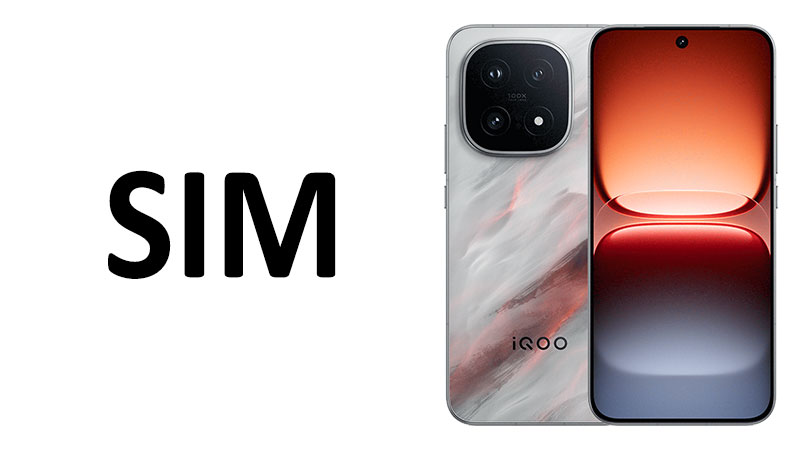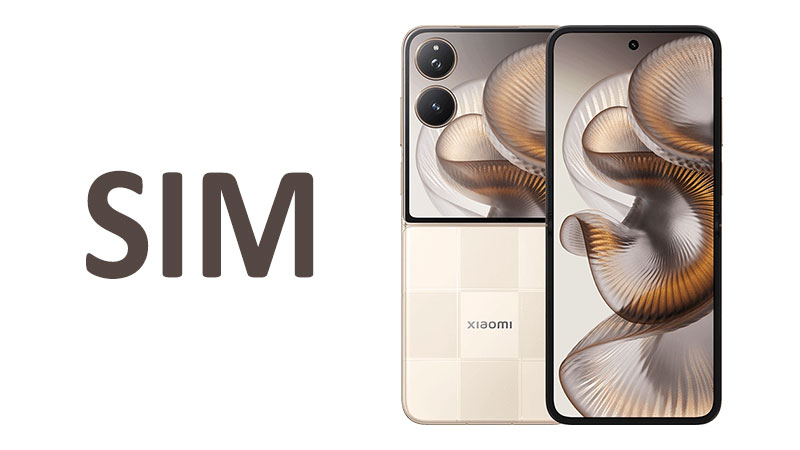This detailed analysis of the vivo iQOO 15 SIM and its comprehensive connectivity suite is essential. The modern smartphone experience relies entirely on robust and flexible connections. This article performs a comprehensive review. We explore the dual-SIM capability, cellular technology, and the advanced wireless standards. Understanding these features helps buyers make informed purchasing decisions. The vivo iQOO 15 is positioned as a powerful flagship device. Its connectivity array must therefore meet the highest demands of speed and reliability.
The Foundation of Connectivity: vivo iQOO 15 SIM Dual-SIM Technology
The vivo iQOO 15 SIM setup provides robust dual-SIM support. It features a physical tray for two Nano-SIM cards. This configuration offers significant flexibility to the end user. It allows simultaneous use of two separate mobile numbers. This dual-SIM dual standby (DSDS) functionality is crucial for many users today.
Nano-SIM Configuration and User Benefits
The phone utilizes a Nano-SIM + Nano-SIM arrangement. This is the current standard for physical SIM card slots. Users can seamlessly manage two lines. They can keep a personal number separate from a business line. International travelers also benefit greatly from this setup. They can use a local data SIM alongside their home country number.
The dual-SIM nature means both lines stay active for incoming calls and texts. If one SIM is engaged in a call, the other typically stays on standby. This system ensures you never miss an important contact. The flexibility provided by dual Nano-SIMs is a major selling point. It addresses the needs of a globally connected user base effectively.
Specialized Comparison: Dual Nano-SIM vs. eSIM
The vivo iQOO 15 uses two physical Nano-SIM slots. This differs from models that rely on eSIM technology. eSIMs offer convenience and eliminate the need for a physical card. However, physical SIMs still offer wider global compatibility. Many smaller network carriers do not yet fully support eSIM provisioning.
Furthermore, a physical SIM is easier to swap between devices. This is a practical advantage for frequent phone testers or upgraders. The dual Nano-SIM approach is straightforward and highly reliable. It bypasses the complexity some users find with eSIM activation. The choice of Nano-SIM + Nano-SIM prioritizes ease of use and universal compatibility.
Dual-SIM Pros and Cons
The dual physical SIM setup presents clear advantages. It offers maximum network redundancy and call flexibility. You can manually select the preferred SIM for data, calls, or texts. This optimizes costs when roaming or using differing plan structures.
A minor drawback is the lack of an eSIM option. This means the phone occupies two physical slots for connectivity. Some competing devices offer a single Nano-SIM slot plus an eSIM. That configuration leaves room for a potential microSD card or a third functional slot. Since the iQOO 15 is a flagship, storage is likely internal. Therefore, the dedicated dual Nano-SIM slots maximize connectivity without compromise.
Cellular Network Mastery: 5G and Global Standards
The vivo iQOO 15 supports an extensive range of cellular technologies. It handles GSM, HSPA, LTE, and the latest 5G standard. This ensures the phone offers seamless global coverage. Users will find reliable service in nearly any mobile network environment.
Unleashing Blazing-Fast 5G Connectivity
The inclusion of 5G is essential for any modern flagship smartphone. 5G connectivity provides extremely fast download and upload speeds. It offers ultra-low latency critical for real-time applications. These include cloud gaming and augmented reality experiences.
The 5G technology in the iQOO 15 is robust. It supports various bands to ensure wide carrier compatibility. This means the phone delivers a stable, high-speed connection in 5G-enabled regions. The difference between 4G LTE and 5G is dramatic, particularly in dense areas. 5G capacity management prevents network slowdowns during peak usage times.
Technology Explained: HSPA and LTE
While 5G is the focus, the phone maintains backward compatibility. It fully supports older technologies like HSPA and LTE. High-Speed Packet Access (HSPA) provides solid 3G performance. Long-Term Evolution (LTE) is the established 4G standard. LTE still serves as the primary connection layer in many global areas.
The phone intelligently switches between these technologies. It ensures you maintain a consistent mobile connection even when 5G is unavailable. This is crucial for seamless navigation and uninterrupted streaming. Strong support for all generations guarantees reliable network stability.
Important Points for Buyers
Buyers should verify the specific 5G bands supported in their region. A broad range of band support confirms global versatility. The iQOO 15’s comprehensive technology list suggests excellent compatibility. This wide compatibility is vital for travelers and users in evolving network landscapes. The seamless transition between 5G and 4G ensures optimal mobile performance everywhere.
Next-Generation Wireless Standards: Wi-Fi 7 Integration
The vivo iQOO 15 features cutting-edge wireless networking. It includes support for the revolutionary Wi-Fi 7 standard. This is a significant leap forward in wireless connectivity. It drastically enhances speed, capacity, and responsiveness. The phone also supports all prior generations: 802.11 a/b/g/n/ac/6.
Deep Dive into Wi-Fi 7 (802.11be) Benefits
Wi-Fi 7, also known as IEEE 802.11be, introduces key architectural changes. The most important feature is Multi-Link Operation (MLO). MLO allows the phone to transmit and receive data across multiple frequency bands simultaneously. This includes the 2.4 GHz, 5 GHz, and 6 GHz bands.
This simultaneous operation results in incredible speed gains. It also provides unprecedented reliability. If one band experiences interference, the phone maintains the connection on another. MLO dramatically reduces latency, which is perfect for competitive online gaming. It is also highly beneficial for cloud streaming and real-time collaboration.
Wi-Fi 7 vs. Wi-Fi 6/6E Comparison
Previous Wi-Fi 6 and 6E standards offered solid performance. They introduced orthogonal frequency-division multiple access (OFDMA) and the 6 GHz band. Wi-Fi 7, however, doubles the channel bandwidth to 320 MHz. This effectively doubles the potential data throughput.
It also upgrades the modulation scheme to 4K QAM. This allows packing more data into each transmission. The iQOO 15’s Wi-Fi 7 capability future-proofs the device. It ensures the phone can handle the increasing demands of data-intensive applications. It is a vital feature for power users and gamers.
Dual-Band and Wi-Fi Direct Functionality
The iQOO 15 supports dual-band operation. This refers to the standard 2.4 GHz and 5 GHz frequencies. The 2.4 GHz band offers wider coverage and better penetration through walls. The 5 GHz band provides faster speeds over shorter distances. The phone intelligently switches between these for optimal performance.
Wi-Fi Direct is another included feature. It enables the phone to connect directly to other devices. This happens without needing a centralized Wi-Fi router. It is useful for quickly sharing large files or screen mirroring. This comprehensive Wi-Fi package delivers both high performance and great flexibility.
Bluetooth 6.0 and High-Fidelity Wireless Audio
The wireless audio experience is often overlooked in smartphone reviews. The vivo iQOO 15 makes it a priority with Bluetooth 6.0 technology. Bluetooth 6.0 represents a substantial evolution over earlier versions like 5.3. It focuses heavily on enhancing high-resolution audio. It also improves connection stability and power efficiency.
Breakthroughs in Bluetooth 6.0
Bluetooth 6.0 introduces several enhancements crucial for audio quality. It further refines the Low Energy (LE) Audio standard. LE Audio enables higher-quality audio transmission with less power consumption. This means longer battery life for both the phone and connected accessories.
A major feature of Bluetooth 6.0 is the improved Isochronous Adaptation Layer (ISOAL). This enhancement reduces latency in audio and data transfer. Ultra-low latency is key for watching videos or playing games wirelessly. It minimizes the annoying delay between the screen action and the sound you hear. Bluetooth 6.0 ensures a more synchronized and immersive experience.
The Ecosystem of High-Resolution Audio Codecs
The iQOO 15 supports a premium suite of audio codecs. These include aptX HD, aptX Adaptive, aptX Lossless, and LHDC 5. These technologies are essential for transmitting high-resolution audio over Bluetooth. Standard Bluetooth typically compresses audio heavily, losing detail.
AptX Lossless is particularly noteworthy. It offers CD-quality, bit-for-bit perfect audio transmission wirelessly. This satisfies the most demanding audiophiles. AptX Adaptive dynamically adjusts the bitrate to the environment. This ensures stable high-quality audio without dropouts. LHDC 5 is vivo’s premium offering, competing directly with high-end codecs. The presence of all these options makes the iQOO 15 an excellent choice for wireless music lovers.
Bluetooth 6.0 vs. Bluetooth 5.3
Bluetooth 5.3 was primarily focused on efficiency and reliability. Bluetooth 6.0 maintains these benefits while significantly boosting range and precision. It introduces channel sounding features. These allow for centimeter-level positioning accuracy. While primarily for location services, this also aids in connection stability.
Bluetooth 6.0 boasts an increase in raw data transfer speed. This larger bandwidth is critical for supporting the lossless audio codecs like aptX Lossless. For the user, this means better sound quality and a stronger, wider connection range. The iQOO 15’s inclusion of 6.0 demonstrates a commitment to future-proofing its wireless ecosystem.
Advanced Global Positioning Systems and Precision Navigation
The vivo iQOO 15 is equipped with a sophisticated multi-GNSS system. It supports all major global constellations. These include GPS, GLONASS, BDS, GALILEO, and QZSS. This wide array of support ensures excellent coverage worldwide. More importantly, the phone features dual-band positioning: L1+L5.
The Power of L1+L5 Dual-Band GPS
Traditional GPS receivers use the L1 frequency band. The iQOO 15 adds support for the L5 frequency. L5 is a dedicated signal for safety-of-life applications. It is broadcast at a higher power and with greater bandwidth.
Dual-band reception drastically improves location accuracy. It minimizes errors caused by atmospheric interference, specifically the ionosphere. By receiving signals on two different frequencies, the phone can calculate and correct for ionospheric delay. This correction leads to much more reliable positioning.
Performance in Urban Canyons and Challenging Environments
The biggest benefit of L1+L5 is improved performance in urban areas. High-rise buildings cause signals to reflect or bounce, known as multipath interference. The L5 signal is better at rejecting these reflected signals.
This means you get lane-level accuracy when navigating in a city. Traditional single-band GPS often struggles to pinpoint your exact location between skyscrapers. The multi-GNSS support further enhances this reliability. Having access to GPS, GLONASS, BDS, GALILEO, and QZSS satellites provides massive redundancy. This ensures a fast time-to-first-fix (TTFF) and consistent tracking, even under heavy tree cover or in narrow alleys.
Buyer’s Perspective on GNSS Features
For the average buyer, this complex positioning system translates to real-world benefits. It means superior accuracy for running apps and fitness tracking. It ensures precise location tags on photos. Most crucially, it guarantees reliable, accurate navigation every time you drive or walk. The iQOO 15 provides some of the best mobile positioning technology available.
Contactless, Data Transfer, and Legacy Connectivity
Beyond mobile and wireless internet, the iQOO 15 integrates several other crucial connectivity features. These elements complete the phone’s communication and data transfer profile. They include NFC, an Infrared port, and the USB Type-C 3.2 standard with OTG.
NFC for Seamless Contactless Interactions
Near-Field Communication (NFC) is standard on high-end phones. The iQOO 15 includes NFC functionality. This enables quick, secure contactless payments via mobile wallets. It also allows for fast pairing with other NFC-enabled devices like speakers or headphones.
NFC simplifies many daily tasks. Users can quickly share contact information or transfer small files by tapping phones. The convenience of leaving your physical wallet at home is a significant modern advantage. NFC remains an essential feature for everyday urban life.
The Versatile USB Type-C 3.2 with OTG
The phone uses a USB Type-C port, which is the industry standard. Importantly, it supports the USB 3.2 specification. USB 3.2 offers significantly higher data transfer speeds than the older 2.0 or 3.0 standards. This allows for lightning-fast transfer of large files, like 4K videos, to a computer.
On-The-Go (OTG) support is also included. OTG allows the phone to act as a host. You can connect external devices directly to the port. This includes keyboards, mice, flash drives, or external SSDs. The USB Type-C 3.2 standard ensures both fast data transfer and rapid charging capabilities.
The Return of the Infrared Port
The inclusion of an Infrared (IR) port is a thoughtful addition. It caters to users who appreciate controlling home appliances with their phone. The IR port allows the iQOO 15 to function as a universal remote. Users can control televisions, air conditioners, and stereos.
While not a primary feature, it adds significant utility. It reduces remote control clutter in the home environment. This feature is particularly popular in Asian markets. Its presence adds a layer of practical convenience often missing from competitors.
What is Missing: The FM Radio Note
The specification explicitly notes the absence of an FM Radio. This is a common omission in modern flagship smartphones. Most users rely on streaming services for music and news. However, the lack of a radio can be a minor issue in emergencies. A traditional FM radio works independently of a cellular network. This is a small point to consider, but it affects only a niche audience.
Comprehensive Review: Pros, Cons, and Key Takeaways
The connectivity features of the vivo iQOO 15 are genuinely flagship-tier. They are competitive with, and often surpass, industry standards. The combination of Wi-Fi 7 and Bluetooth 6.0 is particularly forward-looking. This section summarizes the major advantages and disadvantages. It also provides key advice for prospective buyers.
Pros of the iQOO 15 Connectivity Suite
The phone’s dual Nano-SIM functionality offers maximum user flexibility. It caters perfectly to both business and personal needs. The inclusion of 5G technology guarantees blazing-fast, low-latency mobile internet access. It supports global connectivity standards.
Wi-Fi 7 provides exceptional future-proofing. It delivers unparalleled speed and network stability via MLO. Bluetooth 6.0 enables a premium, high-resolution wireless audio experience. Codecs like aptX Lossless elevate the sound quality dramatically. The L1+L5 dual-band GNSS ensures highly accurate location tracking. Urban navigation is reliable and precise. Finally, USB Type-C 3.2 ensures rapid wired data transfer.
Cons and Potential Trade-offs
The disadvantages are minimal but worth mentioning. The use of dual physical Nano-SIMs limits future e-SIM adoption convenience. It also means no option for a third card slot for storage. The absence of an FM radio might disappoint some users. Bluetooth 6.0 requires compatible headphones to unlock its full potential. Users with older accessories may not experience the best performance.
The maximum speeds of Wi-Fi 7 depend on having a compatible router. Without a Wi-Fi 7 router, the phone will operate on Wi-Fi 6 or 6E. Buyers should factor in the cost of a router upgrade to realize the full benefits. These trade-offs are minor in the context of the phone’s overall performance profile.
Important Points for a Buyer to Know
Prospective buyers should prioritize the phone’s wireless capabilities. The iQOO 15 is built for speed and low latency. This makes it ideal for serious mobile gamers and streamers. Its comprehensive GNSS system is perfect for outdoor enthusiasts and professional drivers.
The dual-SIM nature simplifies traveling and separating your digital life. Remember that the dual-SIM slots are for Nano-SIMs only. Verify carrier 5G band support in your area before purchasing. This ensures you can access the highest available speeds. The commitment to next-generation standards makes the iQOO 15 a worthy long-term investment.
Conclusion
The vivo iQOO 15 SIM and connectivity features define it as a true next-generation flagship smartphone. The device delivers exceptional speed and unmatched flexibility across all communication vectors. The dual Nano-SIM setup is highly practical for today’s multi-line users. It ensures seamless communication management.
The integration of cutting-edge standards sets the iQOO 15 apart. Wi-Fi 7 capability ensures maximum speed and reliability for home and office networks. Bluetooth 6.0, coupled with advanced codecs, elevates the wireless audio experience to high-fidelity levels. Furthermore, the L1+L5 dual-band GPS provides exceptional location precision. This is particularly noticeable in dense urban environments.
While lacking an FM radio, the inclusion of NFC and the Infrared port adds practical utility. The powerful USB Type-C 3.2 port guarantees fast charging and rapid data transfer. These combined features create a connectivity package that is robust and future-proof. Buyers seeking a highly dependable and technologically advanced mobile connection will find the vivo iQOO 15 an outstanding choice. Its performance ensures a smooth, fast, and connected experience for years to come.
FAQ
Does the vivo iQOO 15 support two separate SIM cards?
Yes, the vivo iQOO 15 includes dual Nano-SIM support. It allows users to operate two different phone numbers simultaneously.
What is the major benefit of the L1+L5 GPS feature?
The L1+L5 dual-band GPS significantly improves positioning accuracy. This is especially true in challenging environments like cities with tall buildings.
Is the vivo iQOO 15 compatible with the newest Wi-Fi standard?
Yes, the vivo iQOO 15 supports the latest Wi-Fi 7 standard. It ensures the fastest wireless internet speeds and lowest latency available.
What advanced audio codecs does the Bluetooth 6.0 support?
The phone supports high-end audio codecs like aptX Lossless and LHDC 5. These codecs are essential for high-resolution wireless audio transmission.
Does the iQOO 15 support fast data transfer via the charging port?
Yes. The phone features a USB Type-C 3.2 port. This standard supports very high data transfer speeds, significantly faster than older USB versions.



